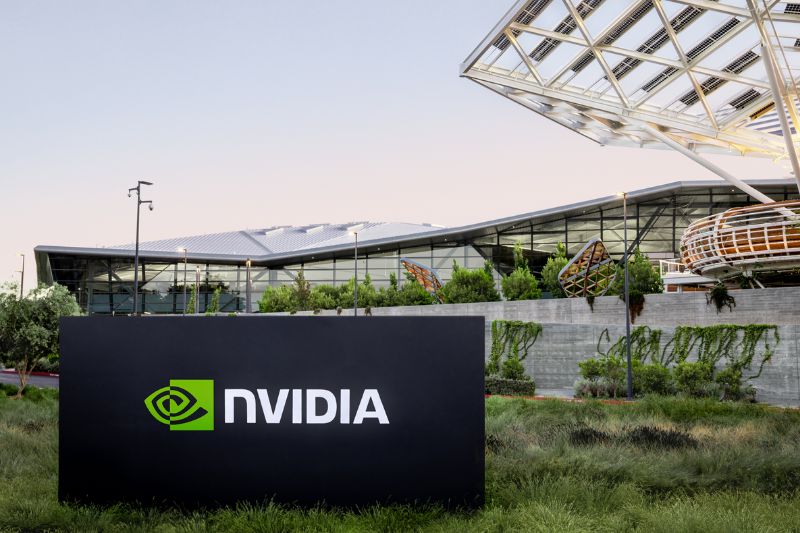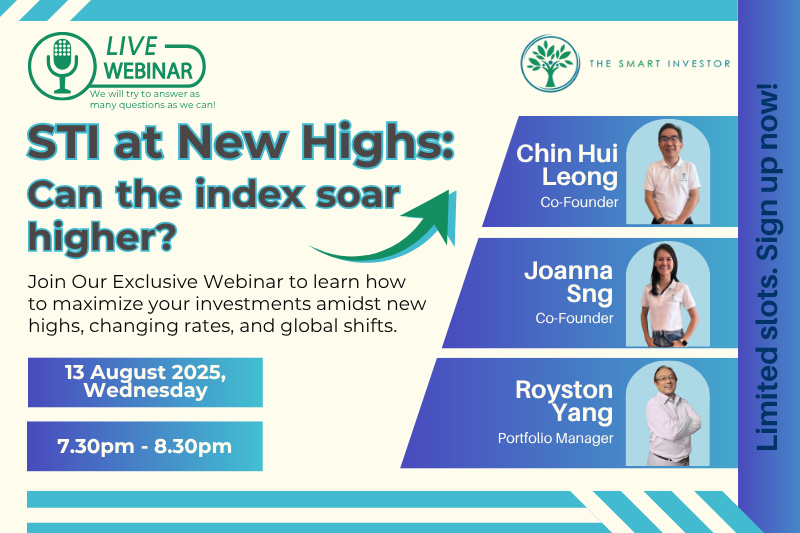The release of ChatGPT created a turning point in technology, bringing artificial intelligence (AI) into the hands of everyday users.
What was once a niche tool for researchers and developers has quickly become part of daily life.
Furthermore, the pace of progress is exponential.
Concepts like artificial general intelligence (AGI), and by extension, humanoid robotics, which once felt decades away, are beginning to look far more attainable.
In this article, we will uncover three US-listed companies at the forefront of the AI revolution.
Each plays a unique role in shaping the future of AI, be it in cloud computing, semiconductor innovation, or robotics.
Amazon (NASDAQ: AMZN)
Many may know Amazon as the front runner of e-commerce, revolutionising the way we shop for items.
Yet, one of its most important breakthroughs can be attributed to the foresight of Jeff Bezos, Amazon’s former CEO, when Amazon became the first major player to define cloud computing.
Today, Amazon Web Services (AWS) has grown into the company’s most valuable segment, providing the infrastructure that powers AI and machine learning applications around the world.
One interesting fact about Amazon is its ability to maintain an entrepreneurial culture even as it grew to be one of the largest companies by market capitalisation.
From his first shareholder letter in 1997, Amazon founder Jeff Bezos has infused the idea that “Everyday is Day 1,” a constant reminder that Amazon should approach decisions with urgency and agility, akin to a start up rather than a complacent, lumbering giant.
Hence, it is also not surprising that Amazon leads the Magnificent 7 in AI capital expenditure.
The e-commerce giant has spent a total of US$39.4 billion in 2Q FY2025, up drastically from about US$22.1 billion in 2Q FY2024.
This high capital expenditure supports Amazon’s future initiatives across multiple key areas.
For instance, DeepFleet is an AI model that enables Amazon’s one million plus robots to find optimal paths and reduce bottlenecks, thereby improving robot travel efficiency by 10%.
The company is also improving its logistics network by using AI-driven demand forecasting to boost regional accuracy by about 20%, helping place inventory more effectively and speed up deliveries for high-demand products.
All in all, Amazon’s relentless push into AI and data centre spending underscores its two clear priorities: driving growth and improving efficiency.
AWS puts the company in a strong position to capture rising demand for AI services and cloud, supporting long-term revenue expansion.
At the same time, innovations in robotics and smarter forecasting tools are streamlining logistics and reducing dependence on manual labour.
For investors, a combination of topline growth and improving margin provides good reasons as to why Amazon could be an attractive stock to own for the long term.
Nvidia (NASDAQ: NVDA)
Nvidia is at the forefront of the AI revolution.
In its fiscal year 2025 (FY2025), the GPU maker’s revenue is projected to reach a staggering US$130.5 billion.
Additionally, the company has also experienced a tremendous gain in its operating margin, expanding from 34% in FY2023 to 67% projected in FY2025.
The driver for improvement?
Nvidia’s data centre revenue is contributing the bulk of the revenue while commanding higher profit margins.
Nvidia’s key customers, including its peers in the Magnificent 7, are also showing no signs of reducing their capital expenditure.
In 2025 alone, these companies have poured an estimated US$392 billion into AI infrastructure, dwarfing prior investments.
Among the seven, Amazon, Microsoft (NASDAQ: MSFT), and Alphabet (NASDAQ: GOOGL) are leading the charge, with projected annual capex of US$100 billion, US$75 billion, and US$85 billion respectively
Looking into the future, we can expect Nvidia’s market dominance to remain intact mainly because of its high switching cost.
A plethora of research papers, AI models and corporate workflow are already built on CUDA (Nvidia proprietary software platform which optimises workload for its GPUs).
Switching to its competitor Advanced Micro Devices (NASDAQ: AMD) or custom chips would mean rewriting or re-optimising codebases which is time-consuming, risky and costly.
Furthermore, the race for AI dominance is unfolding not just among the major tech companies but also between nations.
China, for instance, has been seeking alternative channels to access NVIDIA’s cutting-edge H100 chips, which are critical for training advanced AI models such as DeepSeek.
The high cost of switching, paired with long term demand due to companies and countries racing for AI dominance, represent long-term tailwinds for Nvidia’s business.
ASML (NASDAQ: ASML)
ASML can be seen as a “picks and shovels” play in AI.
It is the sole supplier of Extreme Ultraviolet (EUV) lithography machines which are used to manufacture the most cutting-edge semiconductors.
Without ASML’s machines, semiconductor companies such as TSMC (NYSE: TSM), Samsung (KRX: 005930) and Intel (NASDAQ: INTC) cannot produce cutting-edge chips needed for AI workloads.
In the most recent earnings, management expects net total sales for 2025 to grow around 15% year on year and gross margin to hover around 52%.
Historically, ASML is also a shareholder-friendly company.
It increased its annual dividend at a CAGR of 22.2% from 2015 to 2024.
On top of this, the company also returned more cash to shareholders in the form of share buybacks which dwarfed its dividend payout.
These buybacks signal that management is confident in ASML’s current positioning in the AI trend.
The AI trend creates strong demand for cutting-edge chips, and ASML is the gatekeeper to producing them.
Every dollar spent by Nvidia, TSMC, or hyperscalers on AI eventually flows upstream to ASML, and we do not see any immediate slowing down of hyperscalers’ capital expenditures.
Big Tech is spending hundreds of billions on AI, and the ripple effects are just beginning. Our new investor guide shows how AI is changing the way companies generate revenue, structure their business models, and gain an edge. Even if you already know the major players, this report reveals something far MORE important: The why and how behind their moves, and what it means for your portfolio. Download your free report now.
Follow us on Facebook, Instagram and Telegram for the latest investing news and analyses!
Disclosure: Evan owns ASML and Amazon.





